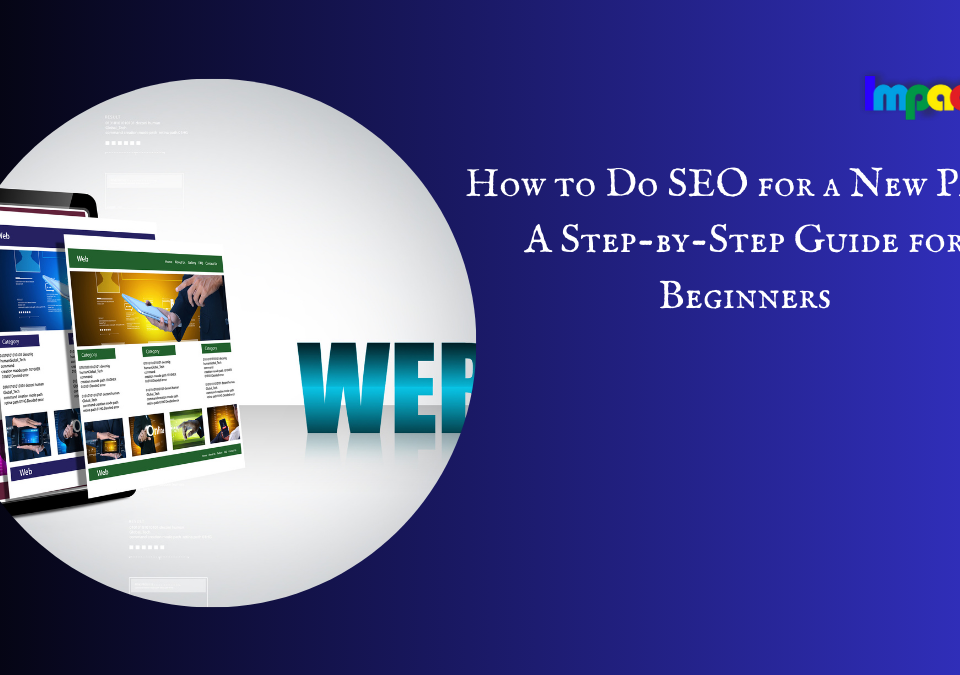Search engine optimization (SEO) is the process of improving the visibility and relevance of a website or a web page in the organic (unpaid) results of a search engine. SEO is essential for any online business that wants to attract more traffic, generate more leads, and increase sales.
However, not all SEO strategies are created equal. There are two main approaches to SEO: white hat and black hat. These terms are derived from the old Western movies, where the good guys wore white hats and the bad guys wore black hats.
In this article, we will explain what white hat SEO and black hat SEO are, how they differ, and why you should avoid black hat SEO at all costs. We will also provide some examples of white hat and black hat SEO techniques, and some tips on how to implement white hat SEO for your website.
Table of Contents
What is White Hat SEO?
White hat SEO refers to ethical strategies that use valuable content and user-centered tactics to improve a website’s position in search results. White hat SEO meets the following three criteria:
- It follows search engine guidelines
- It focuses on a human audience
- It takes a long-term approach
It follows search engine guidelines
The most widely-accepted definition of white hat SEO is that it follows Google’s Webmaster Guidelines. These are the rules that Google has laid out to define the proper way to optimize a website. And while they go into a bit of detail as to what an “ethical” SEO strategy looks like, they can essentially be summed up with one simple idea: Don’t be manipulative.
So, in general, if you’re not attempting to manipulate rankings or otherwise deceive Google’s algorithm, you’re likely following their guidelines and using white hat SEO.
It focuses on a human audience
White hat SEO involves making changes that are beneficial to a site’s visitors. And when you consider that Google’s top priority is to provide their users with the best possible results, it makes sense that this is an essential component of the “right” way to do SEO.
Fortunately, many of the most effective SEO strategies already involve taking steps that improve the experience a site provides its visitors. Tactics like publishing high-quality content and improving page load times improve the value that users get from a site, and the ease with which they can navigate it — making them upstanding, Google-approved strategies.

It takes a long-term approach
Strategies that follow Google’s guidelines and create a positive user experience are often more time- and work-intensive than black hat methods. This means that it will take time to see the results you want.
But on the flip side, white hat SEO also has a much more lasting impact. That’s because when you use strategies that are designed to improve your overall site experience, you can achieve steady rankings for your target keywords.
And unlike black hat methods, which can result in penalties or de-indexing from search engines, white hat methods are unlikely to harm your site in any way. In fact, they can help you build trust and authority with both your audience and search engines, which can lead to more traffic and conversions in the long run.
What is Black Hat SEO?
Black hat SEO refers to attempts to improve rankings in ways that are not approved by search engines and involve deception. They go against current search engine guidelines. Black hat SEO meets the following three criteria:
- It violates search engine guidelines
- It exploits loopholes or weaknesses in search engine algorithms
- It focuses on a search engine audience
It violates search engine guidelines
The most obvious characteristic of black hat SEO is that it breaks the rules set by search engines for proper optimization. These rules are designed to ensure that search engines can provide relevant and useful results for their users, and that webmasters can compete fairly and transparently.
However, some webmasters choose to ignore these rules and use unethical tactics to gain an unfair advantage over their competitors. These tactics are considered black hat because they are dishonest and manipulative, and they can harm both users and other webmasters.
It exploits loopholes or weaknesses in search engine algorithms
Another aspect of black hat SEO is that it takes advantage of loopholes or weaknesses in search engine algorithms. These are flaws or gaps in the way that search engines evaluate and rank websites, which can be exploited by savvy or unscrupulous webmasters.
For example, some black hat techniques involve stuffing keywords or links into hidden or irrelevant places on a website, such as meta tags, comment sections, or footer areas. These techniques aim to trick search engines into thinking that a website is more relevant or authoritative than it actually is.
However, these techniques are risky because search engines are constantly updating and improving their algorithms to detect and penalize such practices. This means that what works today may not work tomorrow, and may even backfire on your website.
It focuses on a search engine audience
The final characteristic of black hat SEO is that it focuses on a search engine audience, rather than a human audience. This means that the main goal of black hat SEO is to rank higher in search results, regardless of the quality or value of the content or the experience that it provides to users.
This can result in websites that are spammy, irrelevant, or misleading, which can frustrate or deceive users. For example, some black hat techniques involve creating duplicate or scraped content, cloaking or redirecting users to different pages, or using doorway pages or sneaky redirects. These techniques aim to increase traffic or conversions, but they can also damage your reputation and credibility with both users and search engines.
Why You Should Avoid Black Hat SEO
As you can see, black hat SEO and white hat SEO are very different in terms of their methods, goals, and outcomes. But why should you avoid black hat SEO at all costs?
The answer is simple: because it can hurt your website and your business in the long run. Here are some of the main reasons why you should steer clear of black hat SEO:
- It can result in penalties or de-indexing from search engines. Search engines have sophisticated ways of detecting and punishing websites that use black hat techniques. These penalties can range from losing rankings or traffic, to being removed from the search index altogether. This can have a devastating impact on your online visibility and revenue.
- It can damage your reputation and trust with your audience. Users are becoming more aware and savvy about the quality and credibility of the websites they visit. If they encounter a website that uses black hat techniques, they may lose trust and confidence in your brand, and may even report or avoid your website in the future. This can hurt your customer loyalty and retention.
- It can harm your relationships with other webmasters and online communities. The online world is built on collaboration and cooperation among webmasters and online communities. If you use black hat techniques, you may be seen as a cheater or a spammer, and you may lose the respect and support of your peers and potential partners. This can limit your opportunities for networking and growth.
- It can prevent you from achieving long-term success. Black hat techniques may seem tempting or effective in the short term, but they are not sustainable or scalable in the long term. They are based on exploiting loopholes or weaknesses that may change or disappear at any time, and they do not provide any real value or benefit to your website or your audience. They are essentially shortcuts that can lead you to a dead end.
Examples of White Hat SEO vs. Black Hat SEO Techniques
To give you a better idea of what white hat SEO and black hat SEO look like in practice, here are some examples of common techniques used by each approach:
White Hat SEO Techniques
- Keyword research: This involves finding and analyzing the words and phrases that your target audience uses to search for information, products, or services related to your niche. Keyword research helps you understand the intent and needs of your audience, and optimize your content accordingly.
- Content creation: This involves producing original, relevant, and valuable content for your website that meets the expectations and satisfies the needs of your audience. Content creation helps you attract, engage, and convert your visitors into customers.
- Content marketing: This involves promoting and distributing your content to reach a wider and more relevant audience for your website. Content marketing helps you build awareness, authority, and trust with your potential customers.
- Link building: This involves acquiring links from other reputable and relevant websites that point to your website. Link building helps you improve your website’s popularity, relevance, and authority in the eyes of search engines and users.
- Technical SEO: This involves optimizing the structure, speed, security, and usability of your website for both search engines and users. Technical SEO helps you improve your website’s performance, accessibility, and crawlability.
Black Hat SEO Techniques
- Keyword stuffing: This involves overusing or repeating keywords in an unnatural or irrelevant way on a website. Keyword stuffing aims to manipulate search engines into ranking a website higher for certain keywords.
- Hidden text or links: This involves hiding text or links on a website by making them invisible to users but visible to search engines. Hidden text or links aim to deceive search engines into thinking that a website is more relevant or authoritative than it actually is.
- Cloaking: This involves showing different content to search engines than to users. Cloaking aims to trick search engines into ranking a website higher for certain keywords or topics that are not related to the actual content of the website.
- Duplicate or scraped content: This involves copying or stealing content from other websites without permission or attribution. Duplicate or scraped content aims to increase the quantity of content on a website without investing time or effort in creating original content.
- Doorway pages or sneaky redirects: This involves creating pages that are designed to rank well for certain keywords or topics, but then redirect users to different pages that are unrelated or harmful. Doorway pages or sneaky redirects aim to lure users into clicking on a website that may be spammy, malicious, or fraudulent.
Some possible ways to continue the article are:
- It can result in a poor user experience. Black hat techniques can create a frustrating or disappointing experience for users who visit a website that uses them. Users may encounter irrelevant, low-quality, or misleading content, slow-loading or broken pages, or unwanted pop-ups or redirects. These can cause users to bounce back to the search results, or worse, lose trust and confidence in the website and the brand behind it.
- It can lead to legal issues or ethical dilemmas. Black hat techniques can also involve violating the intellectual property rights, privacy rights, or personal data of other websites or users. This can expose a website to legal actions or penalties from the original owners of the content, the search engines, or the authorities. Moreover, black hat techniques can raise ethical questions about the morality and integrity of a website and its webmaster.
How to Implement White Hat SEO for Your Website
Now that you know what white hat SEO and black hat SEO are, and why you should avoid the latter, you may be wondering how to implement white hat SEO for your website.
The good news is that white hat SEO is not as complicated or difficult as it may seem. In fact, it is based on some simple and common-sense principles that can help you create a better website for both search engines and users.
Here are some tips on how to implement white hat SEO for your website:
- Conduct thorough keyword research. Keyword research is the foundation of any SEO strategy. It helps you understand what your target audience is looking for, and how you can provide them with the best solutions. Use tools like Google Keyword Planner, Bing Keyword Research, or Ubersuggest to find relevant and popular keywords for your niche, and analyze their competition and search intent.
- Create high-quality content. Content is the core of your website and your SEO strategy. It helps you deliver value and information to your audience, and establish your authority and credibility in your niche. Use your keyword research to create original, relevant, and useful content that meets the needs and expectations of your audience. Use different formats and types of content, such as blog posts, articles, videos, podcasts, infographics, ebooks, etc., to cater to different preferences and stages of the buyer’s journey.
- Optimize your content for search engines and users. Once you have created your content, you need to optimize it for both search engines and users. This means using your keywords strategically and naturally throughout your content, especially in your title tags, meta descriptions, headings, subheadings, body text, images, URLs, etc. This helps search engines understand what your content is about and rank it accordingly. It also means making your content easy to read and understand for users by using clear language, short sentences and paragraphs, bullet points, lists, etc. This helps users scan and digest your content quickly and effectively.
- Promote your content to reach a wider audience. Creating great content is not enough if no one sees it. You need to promote your content to reach a wider and more relevant audience for your website. This means using different channels and platforms to distribute and share your content with potential customers, such as social media, email marketing, guest posting, influencer marketing, etc. This helps you build awareness, traffic, and engagement for your website.
- Build links from other reputable and relevant websites. Link building is one of the most important factors in SEO. It helps you improve your website’s popularity, relevance, and authority in the eyes of search engines and users. However, not all links are created equal. You need to focus on quality over quantity when it comes to link building. This means acquiring links from other reputable and relevant websites that have high domain authority, trustworthiness, and traffic. You can use various methods to build links from other websites, such as:
- Creating and publishing valuable and relevant content that attracts natural links from other websites
- Reaching out to other webmasters or influencers in your niche and requesting or offering a link exchange
- Participating in online communities or forums related to your niche and sharing your content or expertise
- Submitting your website or content to reputable directories or aggregators
- Creating and promoting infographics, videos, podcasts, ebooks, or other types of content that can generate links from other websites
- Improve your website’s technical aspects. Technical SEO is the backbone of your website and your SEO strategy. It helps you improve your website’s structure, speed, security, and usability for both search engines and users. This means taking care of the following aspects:
- Ensuring that your website is mobile-friendly and responsive to different devices and screen sizes
- Improving your website’s loading speed by optimizing your images, code, caching, etc.
- Securing your website with HTTPS and SSL certificates
- Fixing any broken links, errors, or redirects on your website
- Creating and submitting a sitemap and a robots.txt file to search engines
- Using structured data or schema markup to enhance your website’s appearance and functionality in search results
Conclusion
White hat SEO and black hat SEO are two different approaches to optimizing a website for search engines. White hat SEO involves using ethical and user-centered strategies that follow search engine guidelines and provide value and benefit to both users and webmasters. Black hat SEO involves using unethical and manipulative tactics that violate search engine guidelines and exploit loopholes or weaknesses in search engine algorithms.
White hat SEO is the best way to optimize your website for search engines, as it can help you achieve long-term success, build trust and authority with your audience, and avoid penalties or de-indexing from search engines. Black hat SEO is the worst way to optimize your website for search engines, as it can hurt your website and your business in the long run, damage your reputation and trust with your audience, and result in penalties or de-indexing from search engines.
Therefore, you should always avoid black hat SEO at all costs, and focus on implementing white hat SEO for your website. By following the tips and examples we have provided in this article, you can create a better website for both search engines and users, and achieve higher rankings, traffic, and conversions for your online business. Contact Impact Linq for SEO Services.




